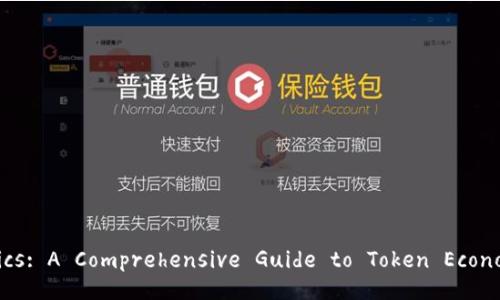Understanding Tokenomics: A Comprehensive Guide to Token Eco
2025-04-23 05:30:52
In the contemporary landscape of digital assets, understanding the intricacies of tokenomics is crucial for investors, developers, and users alike. Tokenomics, a blend of "token" and "economics," refers to the study of tokens within the broader economic framework of cryptocurrency ecosystems. This guide will delve into the structures, value propositions, and implications of tokenomics while offering insights into associated challenges and opportunities. We will explore common questions related to tokenomics, providing a detailed discussion on each aspect.
What is Tokenomics?
Tokenomics is a critical component of blockchain and cryptocurrency projects, focusing on how tokens are created, distributed, and utilized to sustain a project's economy. At its core, tokenomics encompasses several key components:
- Token Utility: This refers to how a token is utilized within a specific ecosystem. Tokens can serve various purposes, such as facilitating transactions, granting access to services, or providing governance rights.
- Distribution Model: The method by which tokens are allocated among various stakeholders (developers, investors, early adopters) can significantly affect a project's success. Common models include initial coin offerings (ICOs), airdrops, and mining.
- Supply and Demand: The total supply of tokens and mechanisms for controlling their circulation (such as burning or staking) play a crucial role in determining a token's value.
- Incentive Structures: Projects often implement specific incentive mechanisms to encourage user engagement, reward participation, or maintain network security.
Understanding these components allows stakeholders to grasp the potential value and risks associated with investing in or using a particular token.
How Do Different Token Models Affect Their Value?

The value of tokens can vary greatly depending on their structure and the overall design of the project they support. Various models exist, and their implications can be significant:
- Utility Tokens: Most commonly found in ICOs, utility tokens provide access to a service or product within a specific ecosystem. Their value largely depends on the demand for the associated services. For instance, if a gaming platform issues tokens for in-game purchases, the demand for those tokens will largely correlate with the platform’s popularity and user base.
- Security Tokens: These are designed as investment vehicles and often represent equity or a share in the issuing organization. Their value may depend heavily on the underlying company's performance and market conditions.
- Governance Tokens: Issued by decentralized platforms, governance tokens allow holders to vote on key decisions ranging from protocol upgrades to fund allocation. Their value can fluctuate based on the community’s engagement and the platform’s effectiveness in achieving its goals.
Furthermore, external factors such as market sentiment, regulatory developments, and competitor performance can also heavily influence token values. Understanding how different token models interact with market dynamics provides investors with a clearer picture of potential risks and rewards.
What Challenges Do Tokenomics Present for Investors?
Investing in cryptocurrencies and tokens presents unique challenges due to the complex nature of tokenomics. Investors need to be aware of various hurdles, including:
- Lack of Regulation: The cryptocurrency market currently operates in a largely unregulated space, exposing investors to potential fraud, scams, or market manipulation. As projects can often lack transparency, it’s crucial for investors to thoroughly research and understand the underlying tokenomics before committing funds.
- Market Volatility: Cryptocurrencies are known for their price fluctuations. Token values can rise or fall dramatically based on sentiment, news, or changes within the project itself. Investors must have the risk tolerance to navigate this volatility.
- Technical Complexity: Understanding the intricacies of blockchain technology and how tokenomics works requires a steep learning curve. Investors often need a solid grasp of technical terms such as smart contracts, liquidity pools, and staking to make informed decisions.
- Adoption and Longevity: The success of a token is directly linked to its adoption and the longevity of the project. Factors such as competition from other projects, technological advancements, and shifts in user preferences can impact a token's viability. Therefore, assessing long-term sustainability is crucial.
Investors, therefore, should approach token investments with caution, conducting thorough due diligence, and continuously staying informed about market trends and developments.
How to Evaluate the Tokenomics of a Cryptocurrency Project?

To make informed investment decisions, it's essential to evaluate the tokenomics of a project comprehensively. Here are several key steps to guide the evaluation process:
- Research the Whitepaper: A project's whitepaper typically outlines its tokenomics in detail. Look for sections dedicated to token utility, distribution models, and supply caps. A well-articulated whitepaper reflects the team's understanding of tokenomics and their commitment to transparency.
- Analyze Token Utility: Understand how the token is designed to be used within the ecosystem. The more use cases a token has, the greater its potential demand and value. Consider whether it solves existing problems or provides innovations to current market practices.
- Assess the Team and Community: Investigate the team behind the project. Are they experienced and reputable? A strong team is often indicative of better project management. Similarly, a vibrant community can be a good sign of token adoption and ongoing support.
- Monitor Market Trends: Stay informed about the industry's broader market trends, potential risks, and competitor performance. Regularly consulting industry analysis reports, news articles, and market data can provide valuable context for evaluating a project’s potential.
Lastly, leveraging tools and platforms that track cryptocurrency performance and key metrics can enhance your evaluation process. By following these steps diligently, investors can gain deeper insights into tokenomics, ensuring more informed investment decisions.
In conclusion, tokenomics is a multifaceted area that combines elements of economics with the innovative landscape of cryptocurrencies. For investors and project developers alike, understanding tokenomics is essential for navigating the digital asset space effectively. By grasping its complexities and challenges, stakeholders can make informed decisions and contribute to more sustainable and thriving cryptocurrency ecosystems.